When you think of survival-action games, you probably imagine barren wastelands, mutant creatures, and plenty of makeshift weaponry. But Atomfall, developed and published by Rebellion, offers something a bit more uniquely unsettling, a nuclear-ravaged British countryside populated by eccentric locals, strange cults, and rogue government operatives. Set five years after a fictionalized version of the real-life Windscale nuclear disaster, this game blends gritty survival mechanics with a dash of folk horror, Cold War paranoia, and a generous helping of British wit. Imagine if George Orwell decided to write Fallout after a particularly grim afternoon tea.
Rebellion, the studio behind acclaimed franchises like Sniper Elite and Zombie Army, has proven its prowess at delivering tense, atmospheric experiences. With Atomfall, they’ve shifted their sniper scopes away from Nazi zombies and onto something even more sinister, post-apocalyptic England. Players find themselves navigating a world steeped in dark mysteries, scarce resources, and brutally desperate combat, all wrapped in the disturbingly cozy veneer of rural Britain. Never before has fighting for your life felt so oddly polite.
At the core of Atomfall lies a player-driven mystery, with decisions and discoveries shaping a dynamic narrative. Every dialogue option, every choice made during scavenging, and each desperate confrontation contributes meaningfully to your unique journey. Survival means crafting, scavenging, bartering, and occasionally resorting to cricket bats for persuasion, because who said post-nuclear survival can’t be stylishly British? The game’s clever balance between tension-filled combat, exploration, and thoughtful storytelling promises a fresh and immersive experience for survival genre enthusiasts.
However, setting your game against the backdrop of a real-world nuclear event, even fictionalized, carries inherent risks. Can Atomfall sensitively navigate this historical context while providing thrilling gameplay and compelling narrative twists? Is it genuinely immersive survival horror, or just another bleak walk through radiation-scarred landscapes? Pull on your wellies, brew a strong cuppa, and join us as we delve into Rebellion’s eerie reimagining of rural England after the bomb.
Setting and Story
The real standout of Atomfall is undoubtedly its evocative and unnervingly authentic setting. Rebellion expertly captures the paradoxical beauty of a radiation-scarred British countryside, delivering lush, rolling hills, idyllic villages, and picturesque landscapes, albeit twisted by nuclear horror, rogue factions, and strange cults. There’s something unsettling about traversing charming rural footpaths and quaint stone cottages, only to stumble across eerie shrines, sinister rituals, and increasingly bizarre encounters. It’s like wandering through a particularly grim episode of a British period drama, except everyone wants you dead or converted to their bizarre nuclear cult.
Narratively, the game is built around a fascinatingly layered mystery. Set five years after the fictionalized Windscale disaster, the region remains quarantined, shrouded in secrecy and conspiracy. Players step into this uncertainty, forced to piece together a complex tapestry of intrigue involving shadowy government agencies, secretive cults, and desperate survivors. The narrative deftly blends folk horror, sci-fi elements, and Cold War paranoia, crafting an atmosphere that’s equally chilling and compelling. Each conversation and clue uncovered inches players closer to understanding the true extent of what happened, if you can survive long enough to find out, that is.
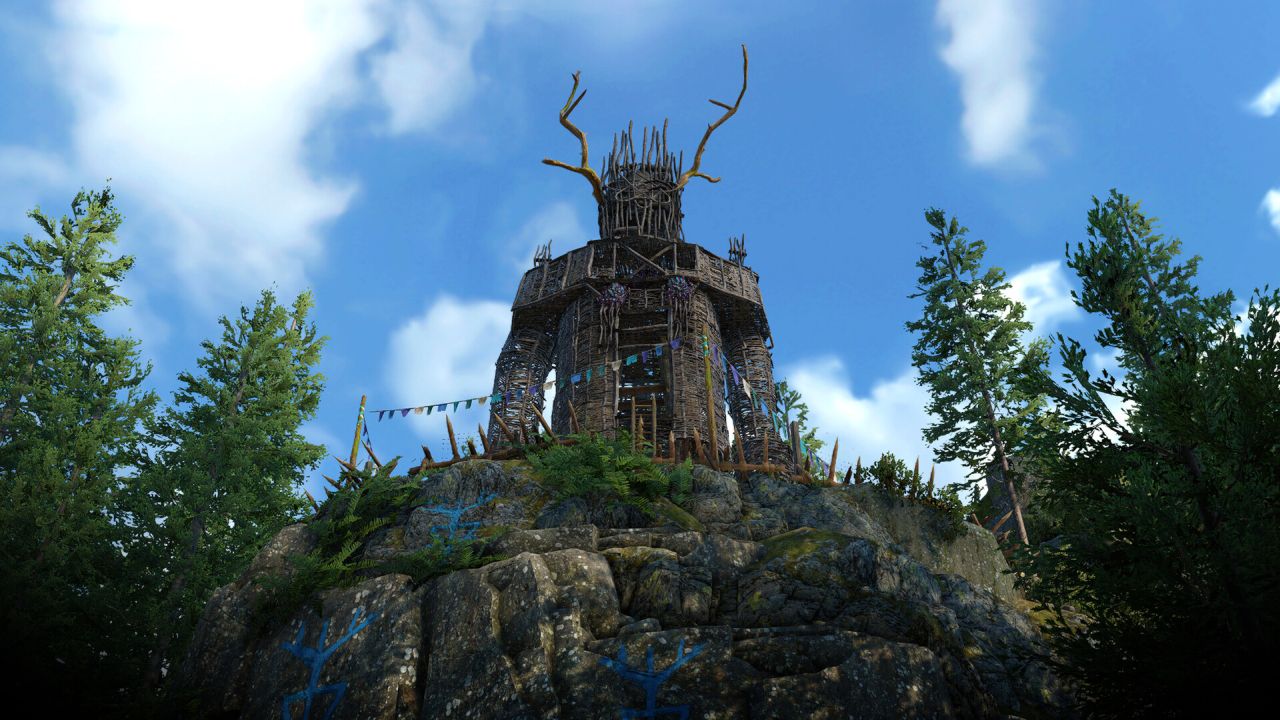 What truly sets the story apart is its emphasis on player-driven outcomes. Every decision, from choosing dialogue responses and investigating clues to forming alliances, shapes the unfolding narrative, ensuring no two playthroughs feel identical. NPC interactions are rich, with bizarre yet believable characters whose motivations and alliances can shift dramatically based on your actions. These interactions often blur moral lines, prompting players to question the rightness of their decisions amid survival’s harsh realities.
What truly sets the story apart is its emphasis on player-driven outcomes. Every decision, from choosing dialogue responses and investigating clues to forming alliances, shapes the unfolding narrative, ensuring no two playthroughs feel identical. NPC interactions are rich, with bizarre yet believable characters whose motivations and alliances can shift dramatically based on your actions. These interactions often blur moral lines, prompting players to question the rightness of their decisions amid survival’s harsh realities.
Rebellion’s fictionalized reimagining of the Windscale incident is handled with impressive care and creativity, carefully avoiding insensitivity while delivering a gripping, immersive story. The tale of nuclear fallout, desperate survival, and shadowy conspiracies feels chillingly plausible, anchored by mature storytelling and nuanced writing. Whether you’re unravelling dark government secrets or simply trying to barter supplies with paranoid villagers, the narrative consistently engages and surprises, making Atomfall‘s unsettling countryside a place worth exploring, despite the ever-present radiation risks.
Gameplay and Mechanics
At its heart, Atomfall is a survival game with teeth, sometimes literally. The gameplay mechanics expertly balance scavenging, crafting, exploration, and combat, creating a tense cycle of desperation and ingenuity. Resources are painfully scarce, meaning every bullet, bandage, and baked bean can counts. It’s one thing to carefully conserve ammo; it’s another thing entirely to have your life hinge on the effectiveness of a battered cricket bat or a makeshift blade. Combat is deliberately frantic and brutal, forcing players to think tactically about when to engage and when to quietly slip away unnoticed.
One of the game’s standout mechanics is the intuitive yet deep crafting system. Scavenging for supplies throughout abandoned houses, bunkers, and overgrown fields feels consistently rewarding, as every scrap of metal or piece of cloth can be crucial. Crafting encourages experimentation, perhaps today’s discarded tea kettle is tomorrow’s jury-rigged explosive. This inventive resourcefulness enhances immersion and perfectly complements the game’s gritty, survival-focused theme, making every discovery feel like a small victory amid overwhelming odds.
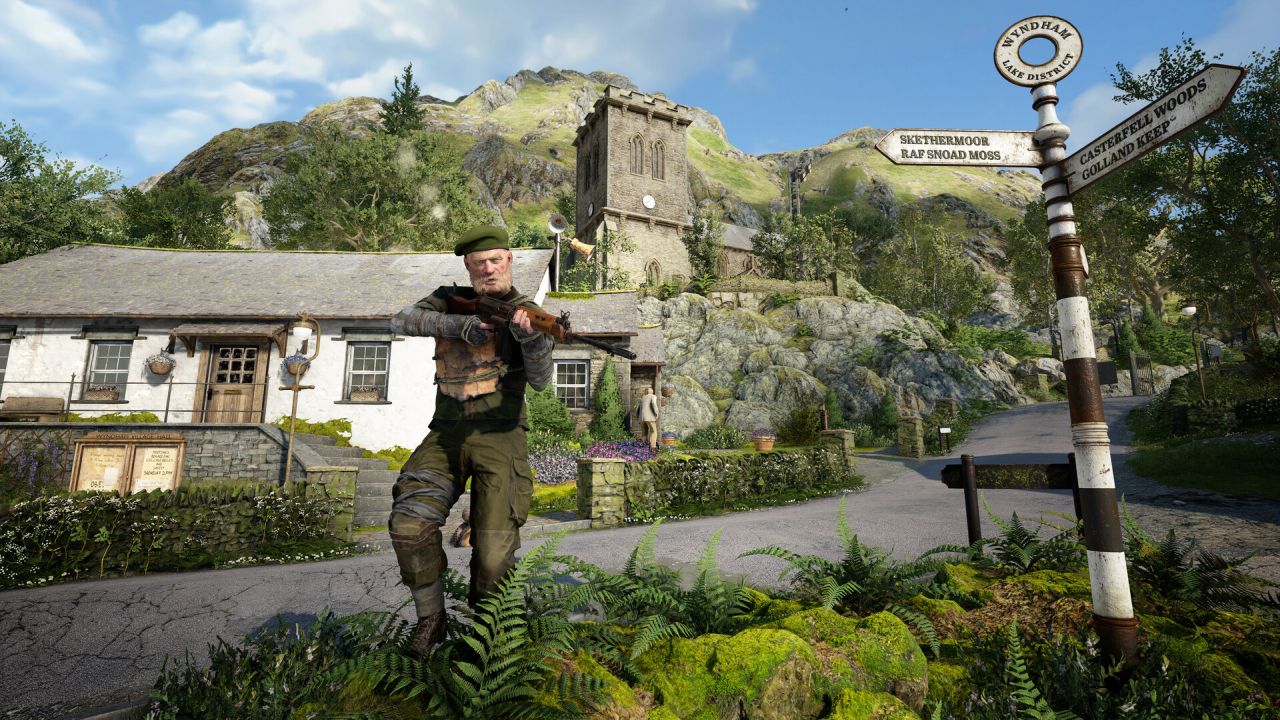 Combat blends stealth, ranged attacks, and visceral melee encounters into a cohesive, thrilling whole. The scarcity of ammunition ensures players never get too comfortable relying on firearms alone, frequently pushing you into desperate melee encounters where managing your stamina, heart rate, and timing becomes critical. This cleverly integrated system adds realistic tension, attempting a precise shot while panicked or exhausted is difficult, ensuring combat always feels perilously unpredictable. It’s refreshing (if slightly stressful) to experience gameplay that genuinely captures the messy, desperate brutality of survival situations.
Combat blends stealth, ranged attacks, and visceral melee encounters into a cohesive, thrilling whole. The scarcity of ammunition ensures players never get too comfortable relying on firearms alone, frequently pushing you into desperate melee encounters where managing your stamina, heart rate, and timing becomes critical. This cleverly integrated system adds realistic tension, attempting a precise shot while panicked or exhausted is difficult, ensuring combat always feels perilously unpredictable. It’s refreshing (if slightly stressful) to experience gameplay that genuinely captures the messy, desperate brutality of survival situations.
Finally, the investigative mechanics add another compelling gameplay dimension. Players actively unravel the game’s deeper narrative by gathering clues, interrogating characters, and piecing together the dark mysteries surrounding the Windscale disaster. The investigative process isn’t merely a narrative afterthought; it’s deeply integrated into gameplay, rewarding exploration and keen observation with meaningful narrative revelations and gameplay advantages. This harmonious blend of survival action, crafting, exploration, and narrative investigation ensures Atomfall consistently delivers engaging, intense, and rewarding gameplay throughout its darkly captivating world.
Multiplayer and Replayability
Let’s immediately tackle the radioactive elephant in the room: Atomfall is purely a single-player experience, deliberately eschewing multiplayer modes to immerse players fully into its tense narrative and oppressive atmosphere. While cooperative survival would undoubtedly be appealing, after all, misery loves company, Rebellion’s decision allows them to finely tune a deeply personal and nuanced journey. If your preferred multiplayer experience involves sharing resources and battling radioactive cultists side-by-side, you’ll have to look elsewhere; however, solo adventurers will find plenty to savour here.
Despite the absence of multiplayer, Atomfall excels at providing extensive replay value thanks to its branching narrative and player-driven choices. Decisions made throughout the game have tangible impacts, significantly altering character interactions, quest outcomes, and even entire sections of the storyline. The diverse cast of eccentric characters, each with distinct motivations and hidden agendas, encourages repeated playthroughs, as alliances and betrayals shift dramatically based on player decisions.
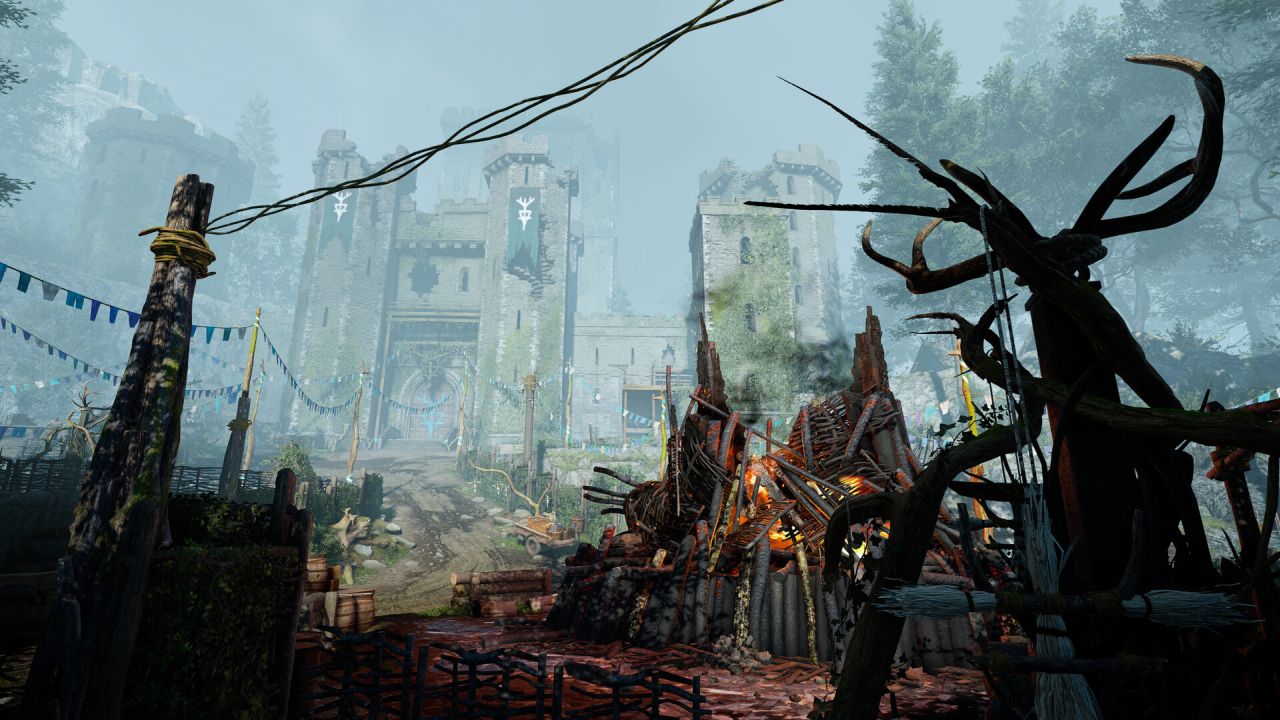 Additionally, the dynamic nature of scavenging and crafting ensures that no two playthroughs feel identical. The scarcity of resources means players are continually forced to adapt their strategies and approaches to combat and exploration. Each run becomes a unique survival puzzle, challenging you to leverage different combinations of crafted items and limited weaponry to overcome adversity. This unpredictability ensures even veteran survivors find fresh challenges and surprises upon revisiting the game.
Additionally, the dynamic nature of scavenging and crafting ensures that no two playthroughs feel identical. The scarcity of resources means players are continually forced to adapt their strategies and approaches to combat and exploration. Each run becomes a unique survival puzzle, challenging you to leverage different combinations of crafted items and limited weaponry to overcome adversity. This unpredictability ensures even veteran survivors find fresh challenges and surprises upon revisiting the game.
Finally, the intricately detailed world of Atomfall rewards dedicated explorers with numerous hidden locations, lore-rich discoveries, and subtle narrative details easily missed on a first run. Completionists and narrative enthusiasts alike will find significant incentive to revisit the beautifully unsettling British countryside, hunting down every last secret and narrative thread. Ultimately, while multiplayer enthusiasts might lament its absence, the game’s deep narrative variability, adaptive survival gameplay, and richly detailed exploration provide ample replayability for those who appreciate immersive solo adventures.
Graphics and Sound
Graphically, Atomfall paints a hauntingly beautiful portrait of post-nuclear England that’s as detailed as it is chilling. The lush rolling hills, quaint stone cottages, and picturesque rural landscapes appear deceptively serene, until you look closer and notice the subtle (and not-so-subtle) signs of nuclear decay and human desperation. Powered impressively by the PS5 hardware, environments boast rich textures, dynamic lighting, and meticulous attention to detail, creating a world that’s both eerily believable and deeply immersive.
Character models and animations further enhance this immersive atmosphere, capturing the distinctively British eccentricity and grit of the diverse NPC cast. Each character feels expressive and vividly realized, from desperate survivors and enigmatic cultists to paranoid government agents. Enemy designs, in particular, offer delightfully creepy visuals, perfectly blending folk horror elements with grotesque mutations born from radiation. These creative design choices ensure encounters remain visually memorable and appropriately unsettling.
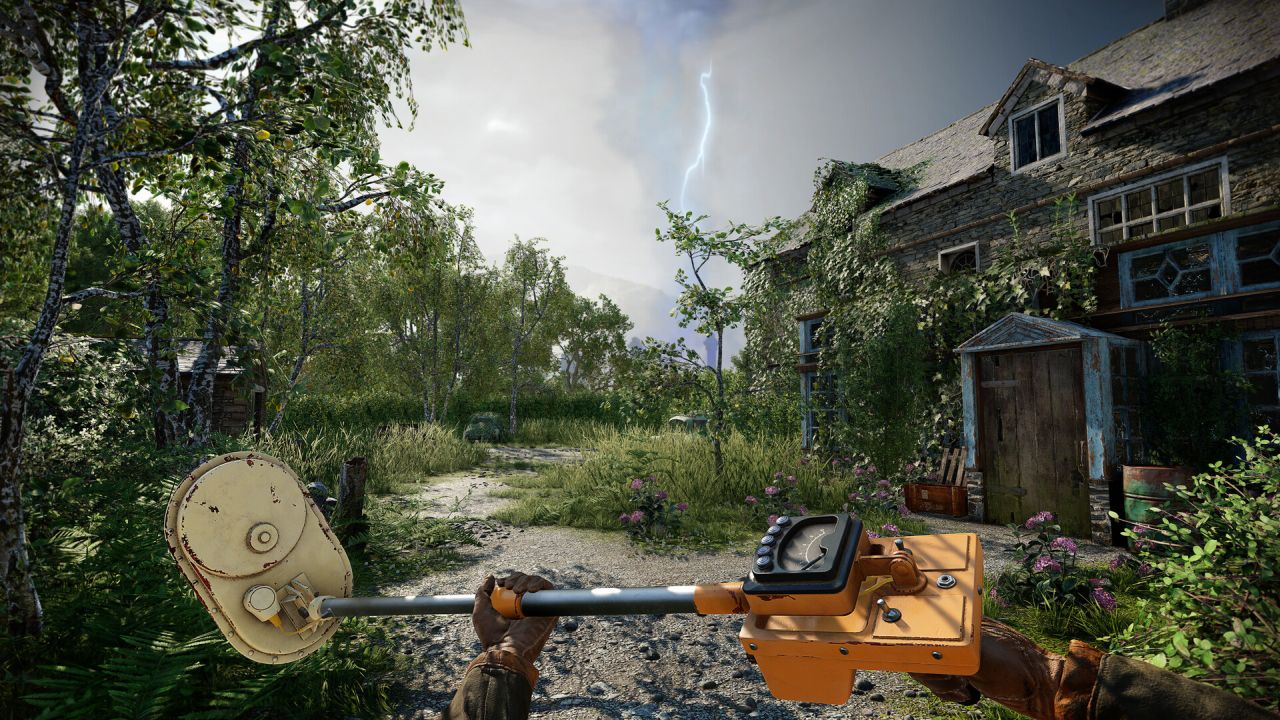 Sound design is equally outstanding, significantly contributing to the game’s oppressive yet engrossing atmosphere. Environmental audio, wind rustling through abandoned cottages, distant unsettling whispers, eerie wildlife sounds, creates a constant sense of tension and unease. Combat sounds pack visceral punch, with every cricket bat swing or firearm discharge feeling satisfyingly impactful. The audio design expertly maintains a sense of realism, enhancing immersion and amplifying the intensity of survival gameplay.
Sound design is equally outstanding, significantly contributing to the game’s oppressive yet engrossing atmosphere. Environmental audio, wind rustling through abandoned cottages, distant unsettling whispers, eerie wildlife sounds, creates a constant sense of tension and unease. Combat sounds pack visceral punch, with every cricket bat swing or firearm discharge feeling satisfyingly impactful. The audio design expertly maintains a sense of realism, enhancing immersion and amplifying the intensity of survival gameplay.
The musical score deserves special praise, effortlessly blending unsettling ambient soundscapes with folk-inspired motifs and period-appropriate influences. It dynamically adapts to gameplay, heightening tension during exploration and elevating adrenaline during intense encounters. Voice acting is consistently superb, showcasing diverse regional accents and emotional depth, further enriching the authenticity and immersion of the narrative experience. Ultimately, Atomfall delivers an audiovisual package that’s both impressive and haunting, vividly bringing its darkly compelling post-nuclear vision to life.
Final Thoughts
Atomfall is a brilliantly executed survival-action experience that effortlessly blends tense, resource-driven gameplay with a richly atmospheric and intriguingly unsettling narrative. Rebellion’s fictionalized depiction of post-nuclear rural England is both deeply immersive and genuinely chilling, offering players a fresh and memorable take on the survival genre. From its innovative combat mechanics and intuitive crafting systems to its layered storytelling and complex character interactions, the game consistently impresses on all fronts.
The deliberate decision to forgo multiplayer modes in favour of a fully immersive solo experience pays off remarkably well, allowing the developers to craft a focused and deeply personal adventure. The player-driven narrative choices ensure ample replayability, compelling gamers to revisit the beautifully crafted British countryside repeatedly, uncovering fresh secrets, alternate story paths, and challenging new scenarios each time. It’s a survival experience that stays gripping and fresh long after the credits roll.
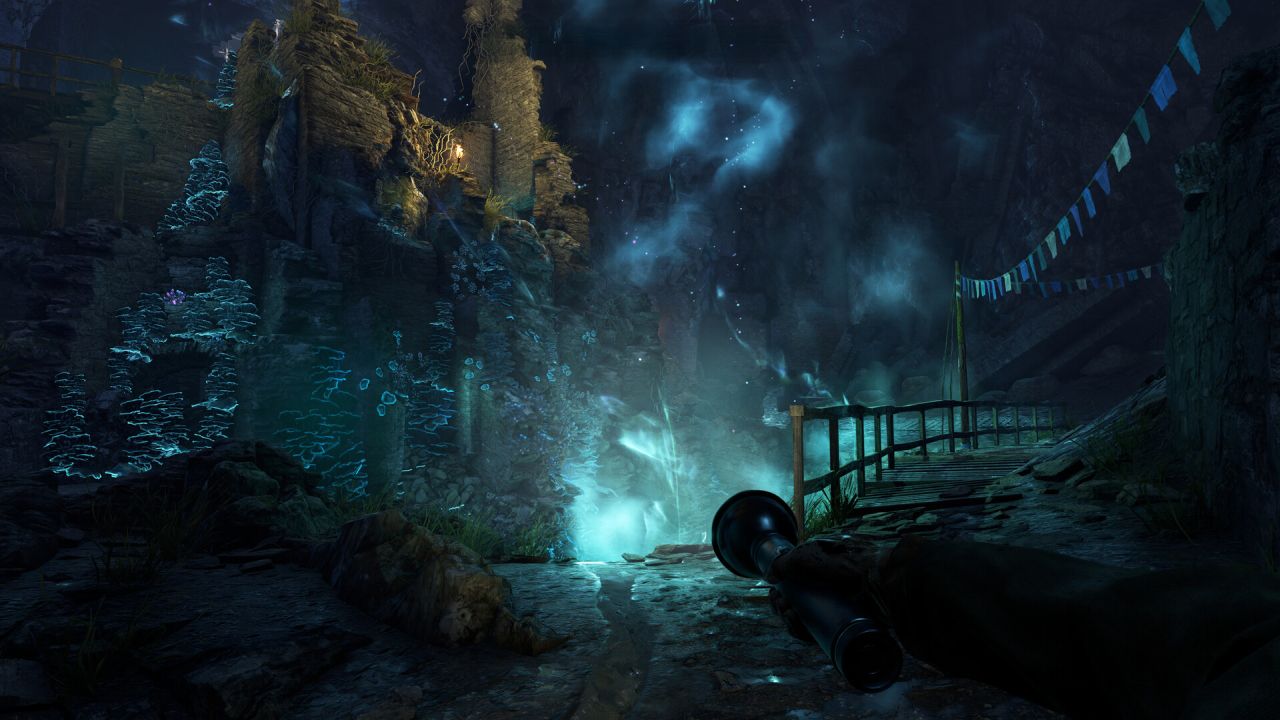 Visually stunning and sonically captivating, Atomfall leverages the PS5’s capabilities expertly, delivering meticulously detailed environments, evocative soundscapes, and exceptional character design. The result is an audiovisual masterpiece that expertly reinforces the game’s intense atmosphere and narrative immersion. From eerie folk-horror influences to brutal survival realism, every visual and auditory detail is carefully crafted, ensuring players remain thoroughly engaged, and consistently on edge, throughout their journey.
Visually stunning and sonically captivating, Atomfall leverages the PS5’s capabilities expertly, delivering meticulously detailed environments, evocative soundscapes, and exceptional character design. The result is an audiovisual masterpiece that expertly reinforces the game’s intense atmosphere and narrative immersion. From eerie folk-horror influences to brutal survival realism, every visual and auditory detail is carefully crafted, ensuring players remain thoroughly engaged, and consistently on edge, throughout their journey.
In short, if you appreciate deeply atmospheric survival games, immersive storytelling, and challenging gameplay that pushes your strategic thinking, Atomfall is an essential addition to your PS5 library. Prepare yourself for desperate combat, unexpected narrative twists, and plenty of unsettling discoveries, all set within one of gaming’s most uniquely haunting worlds. Just don’t forget to pack your cricket bat, you’ll definitely need it.
We prepared this review with a digital copy of Atomfall for the PS5 version provided by Rebellion PR.




